This 12-Minute Standing Routine Builds Core Strength Better Than Planks After 40
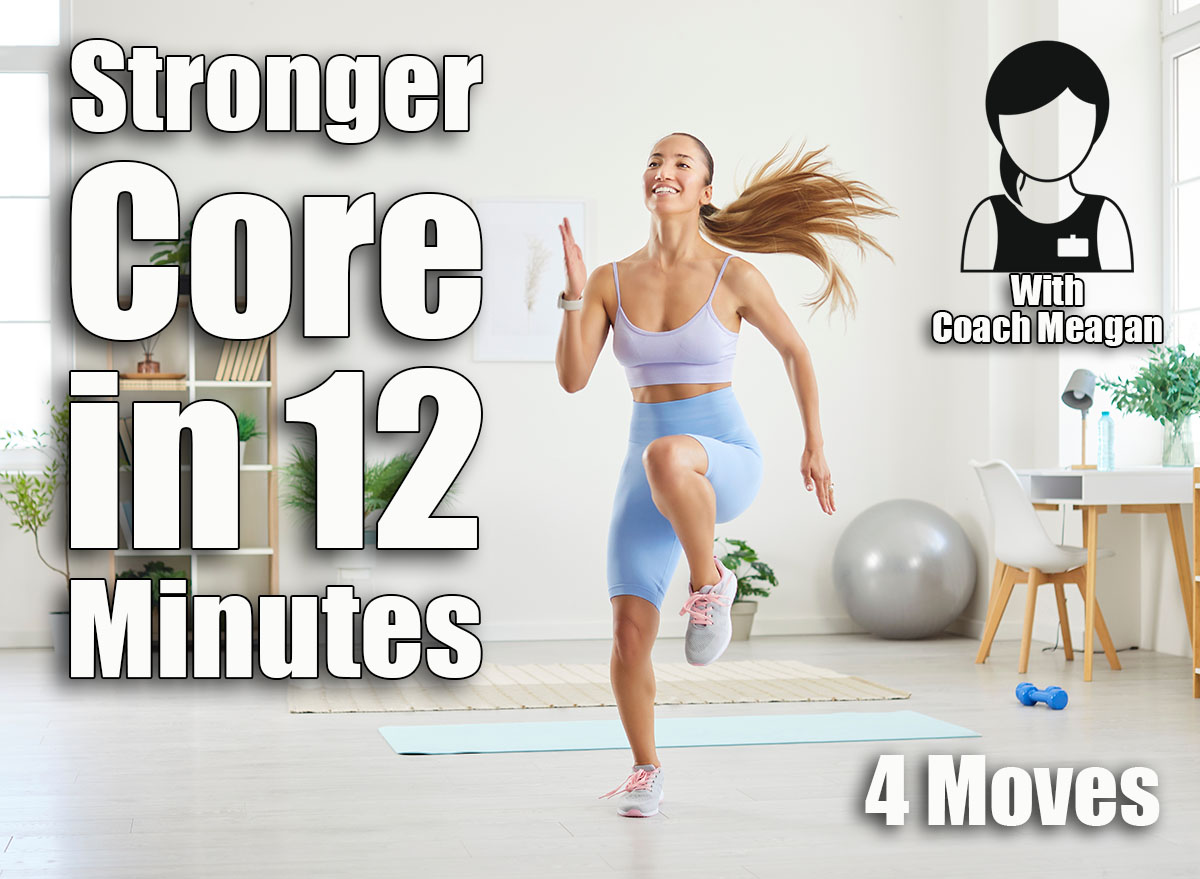
When you hear “core strength,” there’s one exercise that likely comes to mind: the plank. But if holding yourself stiff on the floor feels uncomfortable (or downright boring), you’re not out of options. You can build a strong, more resilient core without dropping to the floor.
After 40, maintaining and building core strength can help protect your spine, support good posture, and boost confidence in daily activities, whether that’s playing with your kids or carrying groceries. That’s where core-targeting standing routines come in. One study found these workouts activate abdominal muscles as much as traditional floor-based exercises, and they also boost balance and coordination.
ETNT chatted with Meagan Kong, CPT, AlterMe’s Head of Fitness, who shares a killer 12-minute standing routine designed specifically to build core strength better than planks after 40. “If planks are not your thing, you’re not alone. Try this 12-minute stand-up routine. It targets core strength, balance, and posture without ever hitting the floor,” Kong says.
This simple sequence takes just 12 minutes, requires no equipment, and can be done anytime, anywhere. Keep reading for the step-by-step instructions and to find out why each move works. Afterwards, check out If You Can Do This Many Chair Stands After 50, Your Leg Strength Is Elite.
12-Minute Standing Routine To Build Core Strength
Standing Knee Lifts (Minutes 1–3)
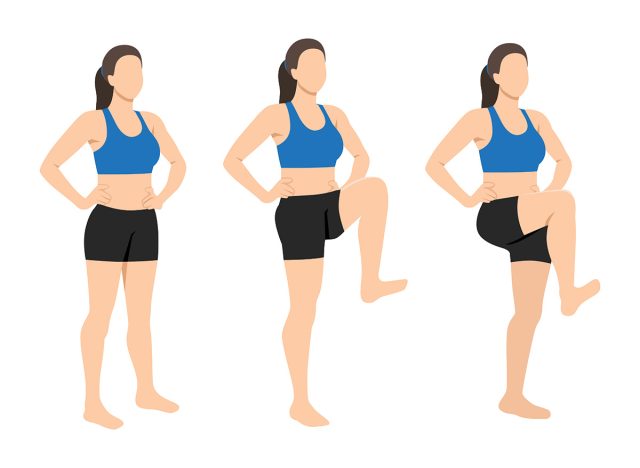
This routine kicks off with a warm-up move that doubles as a core activator and cardio boost. Standing knee lifts mimic marching in place, but the goal is to drive the knees up to hip height to engage your ab muscles. Studies show that combining core activation with light aerobic activity supports fat loss and abdominal strength.
How to do it:
- Stand tall with your feet hip-width apart.
- March in place, driving one knee up to hip height.
- Keep your torso upright and your arms moving naturally.
- Perform 3 sets of 15 lifts per side.
Common mistakes: Leaning backward or hunching your shoulders to lift your knees.
Beginner modification: Lift your knees only as high as comfortable while maintaining balance.
Standing Side Crunches (Minutes 4–6)
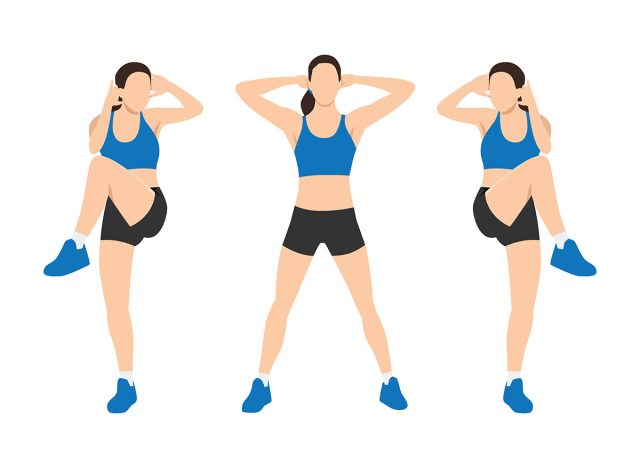
This exercise directly targets your obliques, which are the ab muscles wrapping around the sides of your waist and support spine stability. According to a 2019 study, weak obliques may contribute to back pain and poor posture, especially as you age.
How to do it:
- Place your hands lightly behind your head and keep your elbows wide.
- Shift your weight onto your left foot.
- Crunch your right elbow down toward your right hip as you lift your right knee.
- Return slowly to a standing position.
- Complete 3 sets of 12 reps per side.
Common mistakes: Jerking your torso or pulling on your neck.
Beginner modification: Keep your hands at your sides rather than behind your head.
Standing Torso Rotations (Minutes 7–9)
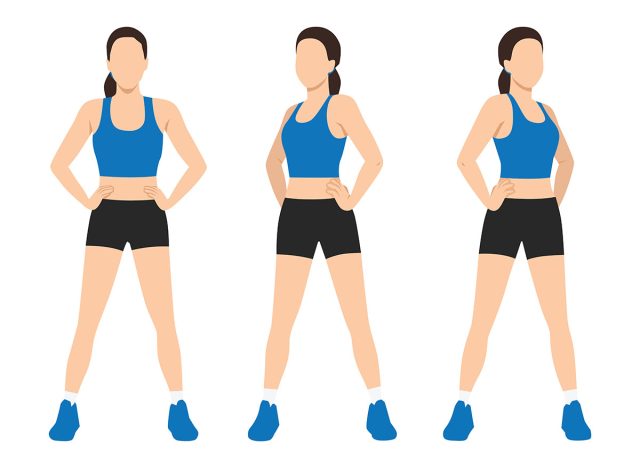
Rotational strength is often overlooked, yet it’s critical for daily activities like turning, reaching, or carrying groceries. Research suggests that rotational training improves both athletic performance and functional mobility.
How to do it:
- Stand with your feet hip-width apart and your knees slightly bent.
- Bring your hands together at chest height.
- Rotate your torso slowly to the right, then to the left.
- Perform 3 sets of 15 reps total.
- Add a light weight (like a small dumbbell) for progression.
Common mistakes: Swinging your arms too fast or twisting your lower back instead of your torso.
Beginner modification: Keep your range of motion small until you get used to the movement.
Side Leg Lifts with Overhead Reach (Minutes 10–12)
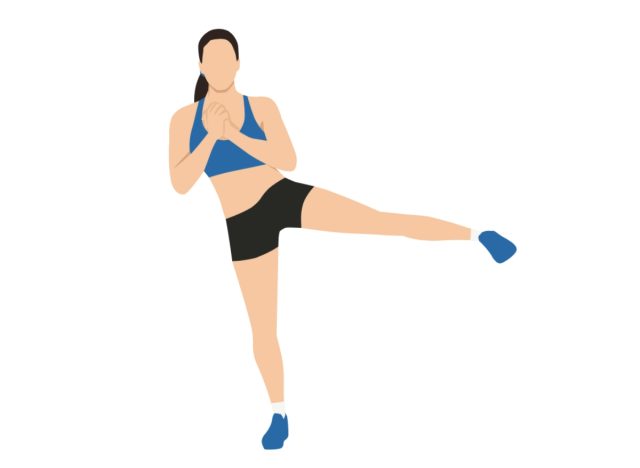
This move will engage your entire core while increasing balance and shoulder mobility.
How to do it:
- Stand tall with your feet together.
- Lift your right leg out to the side while reaching your right arm over your head.
- Return to a standing position with control.
- Switch sides.
- Do 3 sets of 10 reps per side.
Why it’s effective: This full-body move forces the core to stabilize against side-to-side shifts. According to a recent meta-review published in Frontiers in Public Health, balance-focused core training helps reduce fall risk and strengthen hip stabilizers in older adults.
Common mistakes: Tilting your torso sideways instead of keeping it upright.
Beginner modification: Hold on to a chair or wall for support.
How to Put It All Together
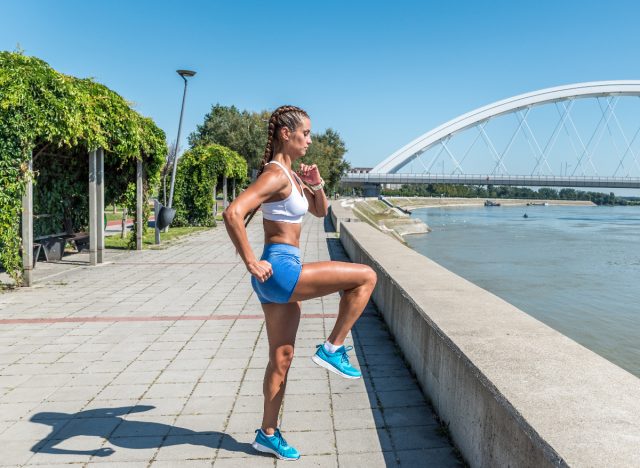
This 12-minute sequence is designed to flow like so:
- Minutes 1–3: Standing Knee Lifts
- Minutes 4–6: Standing Side Crunches
- Minutes 7–9: Standing Torso Rotations
- Minutes 10–12: Side Leg Lifts with Overhead Reach
Cycle through each block once, or repeat the entire sequence if you have more time. “Quick hits count,” says Kong. “I use AlterMe to see those core add-ons boost recovery and energy, and that feedback keeps me coming back.”